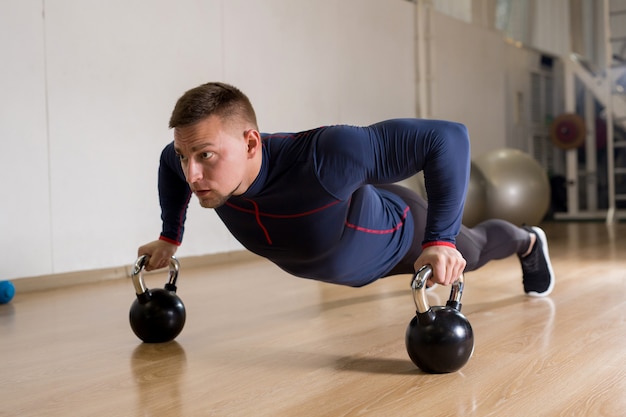When it comes to building a strong, stable core, the debate between free weights and machines is more than just gym philosophy—it’s about understanding how each tool affects your body’s balance, coordination, and functional strength. While both have their place in a well-rounded fitness routine, the real question is: which one better supports core stability?
Core stability isn’t just about visible abs. It’s the foundation of nearly every movement you make, from lifting groceries to running a 5K. A strong core protects your spine, improves posture, and enhances athletic performance. So, let’s break down the science and practical benefits of free weights and machines—and give you actionable steps to build real, measurable core strength.
Free weights—dumbbells, barbells, kettlebells—require your body to stabilize itself during movement. Unlike machines, which guide your motion along a fixed path, free weights introduce instability, forcing your core muscles to activate continuously.
For example, during a barbell squat, your core must work hard to keep your torso upright and prevent swaying. Similarly, a dumbbell overhead press demands anti-rotational strength to stop your body from leaning to one side. These subtle but powerful demands make free weights a top choice for functional core development.
Research shows that compound lifts using free weights—like deadlifts, lunges, and bench presses—activate more stabilizing muscles, including the transverse abdominis, obliques, and erector spinae, compared to machine-based exercises.

Machines offer a controlled environment, which can be beneficial—especially for beginners or those recovering from injury. Because the movement path is fixed, machines reduce the need for balance, allowing you to focus on muscle isolation.
However, this same benefit can be a drawback when it comes to core stability. Since machines stabilize the weight for you, your core doesn’t have to work as hard. For instance, a leg press machine supports your back and limits torso movement, minimizing core activation compared to a free-weight squat.
That said, machines can still play a supportive role. They help build foundational strength and muscle endurance, which can later translate into better performance with free weights. Some advanced machines, like cable columns with adjustable pulleys, allow for dynamic movements that challenge stability when used correctly.
When the goal is core stability, free weights generally win. They promote functional strength by engaging multiple muscle groups simultaneously and mimicking real-world movements. Machines, while useful for building muscle and learning proper form, don’t challenge your core to the same degree.
The best approach? Combine both. Use machines to build strength and confidence, then transition to free weights to enhance stability and coordination.

Improvement isn’t just about how much weight you lift—it’s about control, endurance, and form. Use these simple tests every 4 weeks:
Core stability is not built through crunches alone. It requires progressive challenges that engage your entire trunk under load and motion. While machines have their place in strength training, free weights are superior for developing true core stability.
By combining smart exercise selection, consistent practice, and regular progress checks, you’ll build a core that’s not just strong—but functional, resilient, and ready for anything.

Fitness

Fitness

Fitness

Fitness

Fitness

Fitness

Fitness

Fitness

Fitness

Fitness

Fitness

Fitness

Health

Fitness

Health

Health